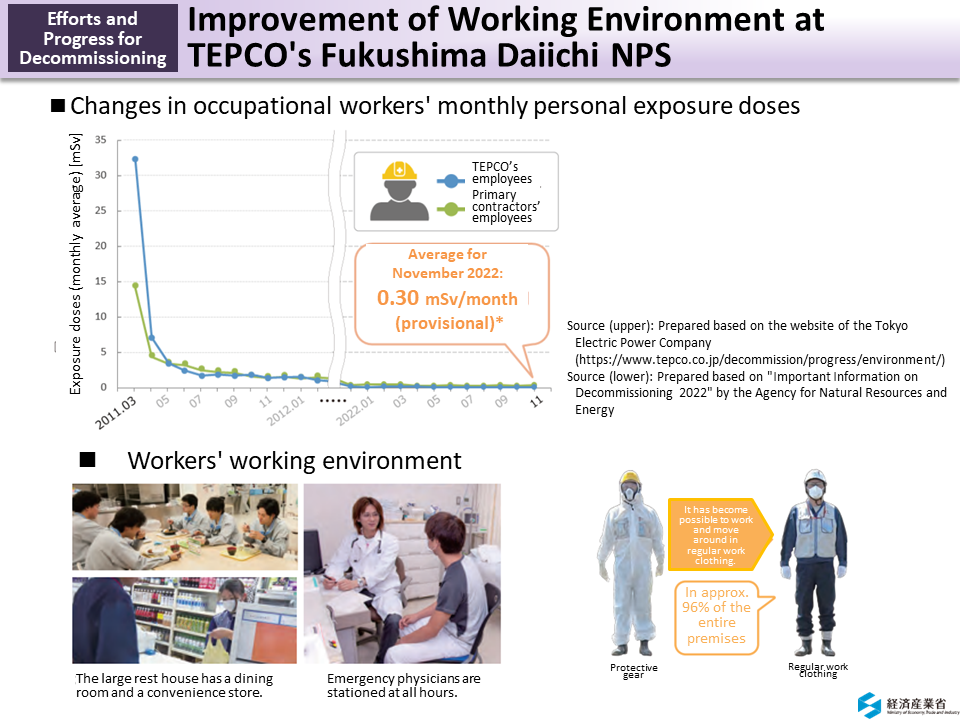Improvement of Working Environment at TEPCO's Fukushima Daiichi NPS
In order to improve safety and workability by reducing workers' load, efforts to improve the working environment for such work as rubble removal and covering of slopes and sites, etc. with mortar have been made at Tokyo Electric Power Company (TEPCO)'s Fukushima Daiichi NPS. As a result, areas where workers can work in regular work clothing expanded to approx. 96% of the entire premises in June 2018.
Furthermore, in November 2018 onward, it became possible for residents to attend a tour of the NPS and observe Units 1 to 4 from a height in ordinary clothing without wearing a mask.
Along with efforts to improve the working environment, etc., reduction of exposure doses has been implemented. The average exposure dose in November 2023 was 0.30 mSv/month, which is sufficiently low compared to the value of 1.67 mSv/month, calculated from the dose limit of 100 mSv per 5 years (p.169 of Vol. 1, “Application of Dose Limits”). Not only radiation control but also comprehensive occupational health management, including countermeasures against heatstroke and infectious diseases, are conducted to ensure the health and safety of workers. Additionally, long-term health management has also been implemented for emergency workers, etc.
In May 2015, a large rest house was opened, and workers are served hot meals prepared at the food service center and can take a shower and buy things at a convenience store. They can thus work under normal working conditions, except for a certain zone, at present.
The facility that manages access to and from the Fukushima Daiichi NPS is equipped to provide emergency medical care 24 hours a day in case of any accident. A heliport has also been constructed so as to ensure prompt transportations to external medical facilities in an emergency.
- Included in this reference material on February 28, 2018
- Updated on March 31, 2023

